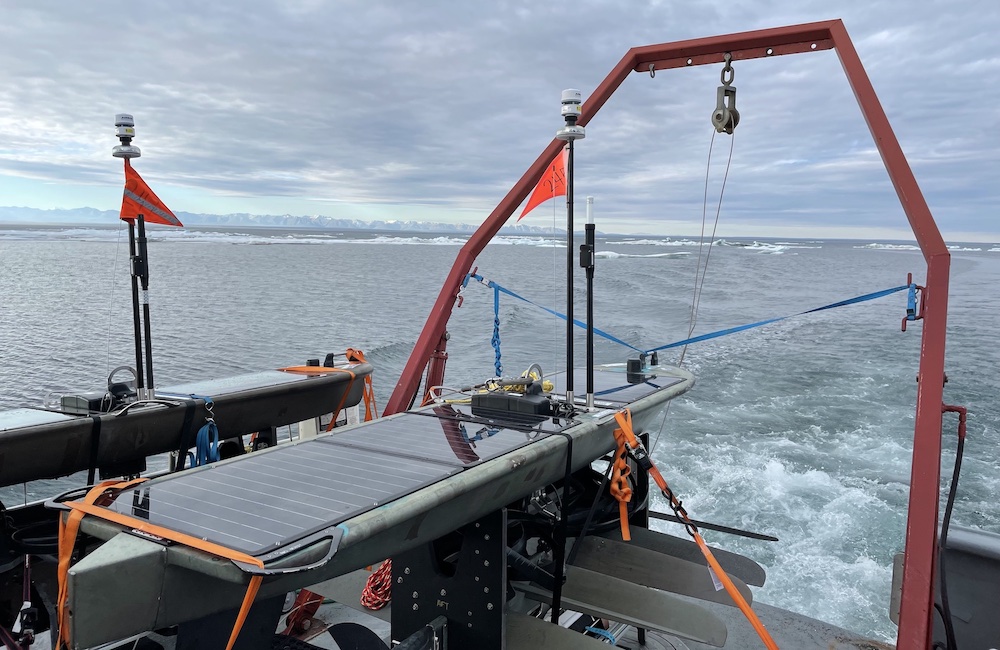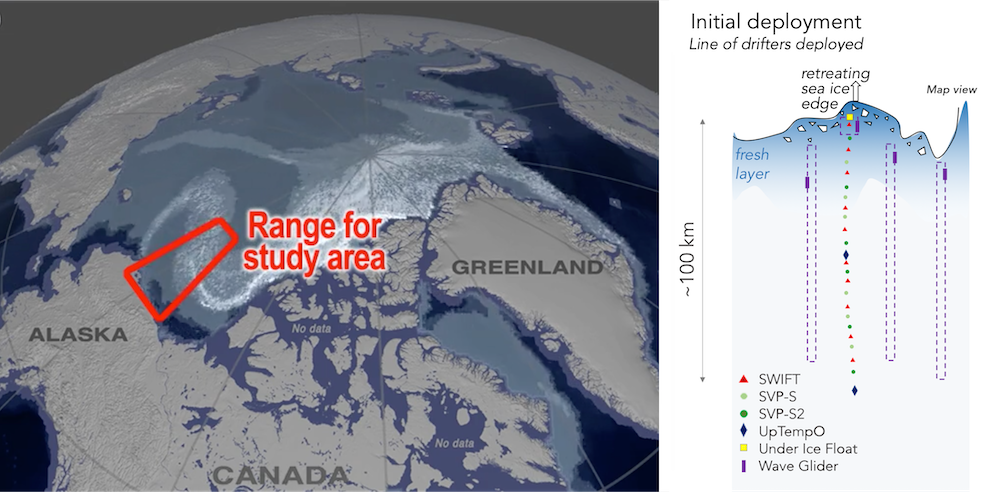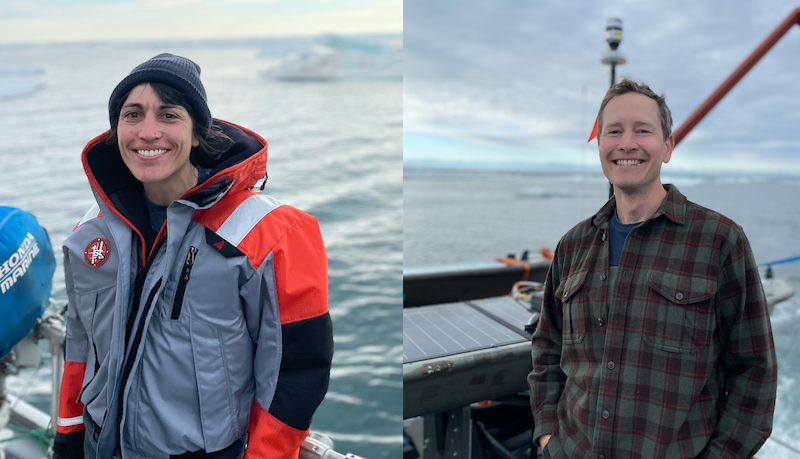Customer
University of Washington, Applied Physics Laboratory
Mission Location
Beaufort Sea, Arctic Ocean
Highlights
- Four Wave Gliders are part of multifaceted data collection mission
- A mix of uncrewed and crewed systems enable researchers to collect data in challenging conditions
- Custom integrated Casting CTDs on Wave Gliders' winches collect profiles to a depth of 150 m
“We’ve integrated new sensors onto the Wave Glider winch, and this really expands our capacity to collect data from a Wave Glider. In addition to the surface measurements, we can now collect salinity and temperature profiles down to 150 m. This will provide us with additional insights into the meltwater layers and offer a more complete picture.”
In Situ Data to Help Predict Future Sea Ice in the Arctic Ocean
Supported by NASA’s Physical Oceanography Program, a multi-disciplinary team of researchers has embarked on a comprehensive, 3-month data collection mission to the Arctic Ocean to capture the transition from summer sea ice retreat to autumn sea ice advance. The goal is to better understand the dynamics and impacts of melting sea ice and to reveal whether summer salinity values can help predict ice formation in autumn.
Over the past decades, sea ice in the Arctic Ocean has dramatically declined. It retreats faster and earlier in summer and advances slower and later in fall. The “open water” period gets longer each year, which impacts the heat and wind exchanges between the ocean and atmosphere, the amount of reflected and absorbed sunlight, the freshwater cycle, ecosystem health and production, and regional and global climate.
A Multifaceted Data Collection Approach
For the next three months, the Salinity and Stratification at the Sea Ice Edge (SASSIE) team will deploy oceanographic and atmospheric instruments from a suite of autonomous vehicles, drifters, crewed and uncrewed aerial systems, and research vessels. Collecting in situ data in the Beaufort Sea can be challenging—conditions change rapidly, bearing the risk of getting stuck in the sea ice.

The fleet of Wave Gliders was successfully deployed off Prudhoe Bay, Alaska, in August 2022. Photo credit: Jim Thomson, APL-UW.
A fleet of four Wave Gliders has just been deployed out of Prudhoe Bay, Alaska, from the Research Vessel Ukpik to collect ocean surface salinity and temperature measurements, as well currents, waves, and meteorological data. Through a custom integration led by the Applied Physics Laboratory at the University of Washington (APL-UW), Aanderra temperature and salinity sensors have been mounted to the Wave Glider surface floats and tethers to measure the upper meter of the ocean. The Wave Gliders have winches equipped with custom integrated D-2 Casting CTDs, providing additional profiles of salinity, temperature, and depth down to 150 m below the surface. The Wave Gliders will be navigating perpendicular to the ice edge in the open ocean, providing data to characterize meltwater layers and estimate heat and salt budgets.
In addition to the fleet of Wave Gliders, other systems include SWIFT Drifters, Under Ice Floats, Surface Velocity Program Drifters, UpTempO Buoys, Icemass Balance Buoys, Jet Surface Salinity Profiler, and Uncrewed Aerial Systems. The R/V Woldstad will be equipped with air-sea flux sensors, a salinity snake, Underway CTD, ADCP, CO2 and Thermo Salinograph sensors. The crewed aircraft carries a Passive/Active L-band System, C-/X-band radiometer, and visible/IR imagers.

Left graphic shows the SASSIE study site in the Beaufort Sea; right graphic shows the SASSIE sampling plan. Credit: SASSIE.
Modeling Experiments for a Deeper Dive into Data Findings
The oceanographic data collection is the first major step for the SASSIE experiment. The team will use the observations of salinity anomalies, how they evolve in time and space, and how they affect stratification, heat storage, sea surface temperature and ice formation to develop a series of model experiments. Data of wind, waves, heat fluxes and ocean dynamics will be analyzed to study their effects on the evolution of meltwater-induced stratification. The researchers will also work on improving satellite observations of sea surface salinity in polar oceans by linking them with the collected in situ salinity data.

On the left, Dr. Kyla Drushka, Lead Principal Investigator of SASSIE; on the right, Professor Jim Thomson, Instrument Principal Investigator of SASSIE. Photo credit: SASSIE.
Project Partners
Led by Principal Investigator Dr. Kyla Drushka from the Applied Physics Laboratory at the University of Washington (APL-UW), the SASSIE team includes members from APL-UW, University of Washington; University of North Carolina Wilmington; NASA Jet Propulsion Laboratory; California Institute of Technology; Woods Hole Oceanographic Institute; Earth & Space Research; University of Hawaiʻi at Mānoa; Barcelona Expert Center; LOCEAN; University of Rhode Island; and ODYSEA, LLC.